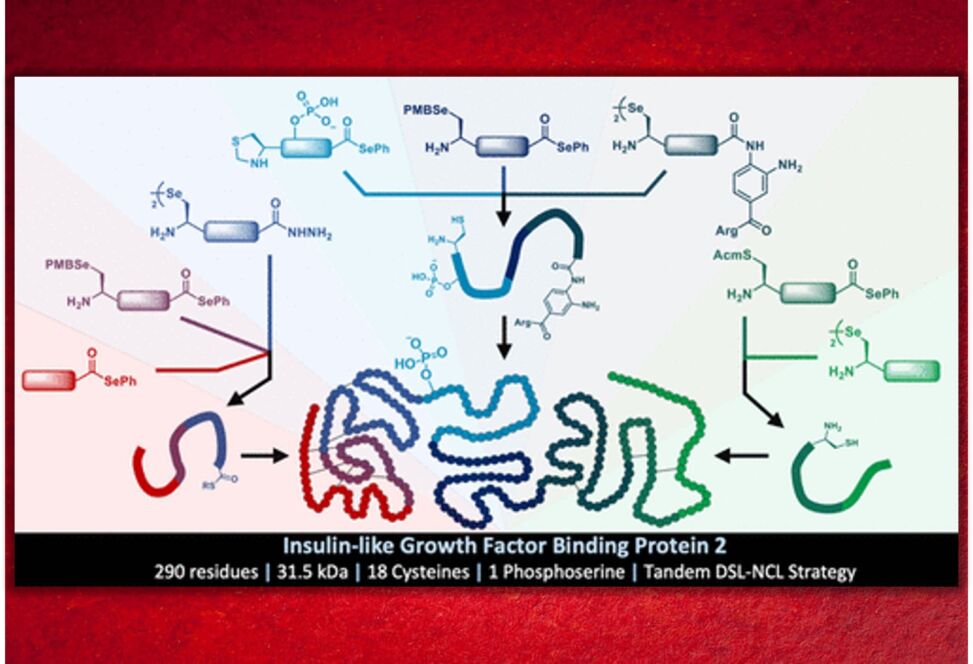APS Research & News
Protein Synthesis
This article reflects work in the Premdjee Lab
Chemical protein synthesis, through the chemoselective ligation of peptide segments, has provided an integral tool to study how post-translational modifications influence protein structure and function.
In this collaborative study between the University of Sydney and Novo Nordisk A/S, the authors have leveraged recently developed Diselenide-Selenoester Ligation (DSL) chemistry with Native Chemical Ligation (NCL) to prepare phosphorylated IGFBP-2. Comprising 290 residues and 9 disulfide bonds, this represents one of the most complex protein targets ever synthesized.
The target was disconnected into 8 smaller peptide fragments which could be assembled in a convergent manner through orthogonal deprotection and activation methods. Following folding and purification, synthetic IGFBP-2 was characterized by circular dichroism and mass spectrometry before verification of IGF binding affinity, all of which were found to be comparable to recombinantly produced IGFBP-2.

Published here on April 25, 2021
Title: Chemical Synthesis of Phosphorylated Insulin-like Growth Factor Binding Protein 2
Authors: Bhavesh Premdjee, Asser S. Andersen, Mark Larance, Kilian W. Conde-Frieboes, and Richard J. Payne
Citation: J. Am. Chem. Soc. 2021, 143, 14, 5336–5342